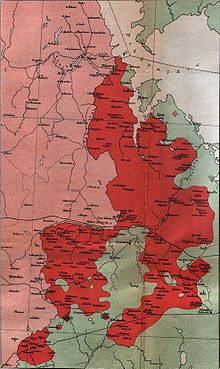| This article needs additional citations for verification. Please help improve this article by adding citations to reliable sources. Unsourced material may be challenged and removed. Find sources: "Setomaa" – news · newspapers · books · scholar · JSTOR (December 2009) (Learn how and when to remove this message) |
You can help expand this article with text translated from the corresponding article in Estonian. (August 2023) Click for important translation instructions.
|


Setomaa (Estonian: Setumaa; Russian: Сетумаа, Seto: Setomaa) is a region south of Lake Peipus and traditionally inhabited by the Seto people. The Seto dialect is a variety of South Estonian. The historic range of Setomaa is located in the territories of present-day Estonia and Russia. Estonian Setomaa presently consists of lands in Võru County located in southeastern Estonia and bordering Russia. Petseri (Russian: Pechory) has been the historic and cultural centre for the Setos.
Current subdivision
Estonian Setomaa consists of:
- In Võrumaa county:
- Setomaa Parish (municipality)
The Russian part consists of Pechorsky District, part of Pskov Oblast. Between 1918 and 1944, the area was part of Estonia, administered as Petseri County. After Estonia regained its independence from the Soviet Union in 1991, there was a dispute between Estonia and Russia over the possession of this territory until Estonia dropped its territorial claims to these areas in 1995.
References
- Estonian-Russian border agreement sent to Russian Duma for ratification. The Baltic Times. 20.03.2015
57°49′N 27°36′E / 57.82°N 27.6°E / 57.82; 27.6
This Pskov Oblast location article is a stub. You can help Misplaced Pages by expanding it. |
This Võru County location article is a stub. You can help Misplaced Pages by expanding it. |